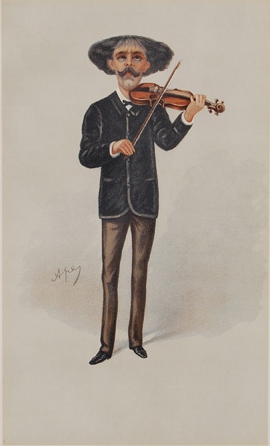Sarasate, Zigeunerweisen

Pablo de Sarasate (1844-1908) was one of the premier violin virtuosos of his day. He wrote approximately 50 compositions, all for the violin. Most of these fall into the category of virtuosic showpieces. The most famous of these are his Carmen Fantasy and Zigeunerweisen, the latter written in 1878 for violin and orchestra.
But today’s performance is on the double bass rather than violin. There is nothing unusual about transcribing a work for a different instrument or ensemble, but any transcription presents some issues since every instrument has its own expressive possibilities and technical limitations. We have previously featured transcriptions, including those by Liszt and Albéniz.
As you might imagine, a violin is more user-friendly than a double bass. That’s not to say that one is necessarily easier to master than the other, just that the violin presents fewer physical challenges to the player. Therefore, the music written for violin tends to be more complex and demanding. Composers push the technical limits of all instruments.
Violin and double bass obviously share many characteristics but differ significantly in size. Because of the size difference, the strings are also tuned differently. Violin strings are tuned at the interval of a fifth, which lies comfortably under a violinist’s fingers. But notes are farther apart on the fingerboard of a bass, so the strings are tuned instead in fourths. This clearly affects the player’s ability to reach double-stops (playing two notes simultaneously). Things that may lie easily within reach on the violin simply stretch the hand and fingers too far on the bass.
All that said, you will find remarkably few changes from the original in this transcription of Zigeunerweisen. It has been transposed from C minor to D minor, but otherwise they are essentially the same.



